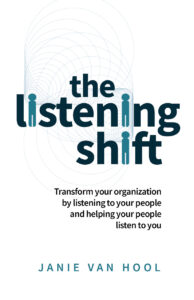Have you ever felt unheard? We have some tips to make yourself heard in the workplace
4 Rs of Professionalism
Working women persistently lag their male companions in Recognition, Respect, Reward, and Raise opportunities. Women are interrupted doubly as much as men. Plus, men deliver up to 75 per cent of the speaking time in decision-making groups.
The aim is clear – women are encouraged to pioneer change. But this rallying call doesn’t bring change to happen on its own.
Changing things needs acts of devotion and dedication, starting with a personal challenge, directing personal biases and building to develop the confidence to challenge others.
Women need to be heard.
It’s down to each and every woman, individually, so where we begin is personal, but where we can make a difference is universal.
Raising our views using your voice requires three things:
- Firstly, noticing what we say;
- Secondly noticing how we say it;
- Finally, noticing what we do to support other women.
Janie Van Hool, the author of The Listening Shift, revealed her top tips on helping to raise women’s voices at work…
What women say…
Language matters – and much of it in companies is just custom. Pay attention to the “adjectives” you practice to express yourself and those used to describe a woman at work.
Mark the language you hear uttered by others and draw attention to any that has an adverse impact on women.
Only when we open our ears to the subtleties and impressions that language has are able to influence change. It’s an essential beginning to proposing women’s voices with confidence.

How women say it…
Women need to take voice sincerely, people judge how they articulate and whilst this may appear unfair, it persists the way of things as women explore gender equity in the workplace.
Pace, pitch, and volume play a significant part in enabling women to be heard.
Of course, you don’t have to modify your voice, but you might prefer to observe paying attention to it as influential participation to managing your impact.
Pace
Pace plays a pivotal part in communicating presence, confidence, and certainty. When in rush, it makes it unmanageable for others to listen, and so they switch off. As a routine, developing the courage to pause provides time for others to ponder and listen, and communicates calm, clarity, and control.
It’s worth practising to make sure this feels natural for you.
Pitch
Pitch is a fascinating area, criticism is often levelled at women for speaking with a rise in tone at the end of a sentence – as if they are asking a question?
In fact, in dialogue with other women, this is a vocal strategy applied to involve and engage others favourably, but we need to mark if we do this as a habit and adapt accordingly. Raising our voices whilst sounding doubtful will lead to our concepts being suspended.
Consider your audience and try to listen to yourself as you speak, finishing your sentences by resolving the pitch down will help to create conviction and certainty.
Volume
Audibility corresponds with reliability, so if one can’t be heard, she will be dropped as lacking substance. In a noisy meeting or debate, trying to ‘break in’ demands a handy toolkit.
I certainly recommend using someone’s name to draw attention to your voice or co-operatively interrupting. Try saying ‘I agree! And let me add…’ to make sure that you get your voice into the conversation.
Author Janie Van Hool
Recording yourself on your phone for analysis is the most suitable practice strategy. Unpleasant as this can be, you will hear what other people hear when you speak. Then you can make any necessary changes.

What women do…
Leading researchers in the domain of differences in gender communication signal us to one important difference –
Women connect by sharing vulnerabilities, whilst men tend to focus on establishing their status with others.
This doesn’t imply that in raising your voice at work you shouldn’t experience how you’re feeling, or be authentic, but it might mean making slight modifications. Try combining confident or assertive statements after expressing self-doubt to develop confidence in your listeners.
For example, ‘I was worried about presenting, I uncertain that I could do it. But I had some feedback, made really well and I think it made a big difference to how I performed.’
Notice who you listen to, you may be astonished to find that you are naturally fascinated by men’s voices in preference to women’s.
There’s a pile of research suggesting all kinds of reasons why this usually happens, but to help us rectify the balance, start deliberately listening to women in your business and repeat what you hear them share.
Champion your women at work – amplify their views and ideas. If you see women in your business intervened or neglected, purposely bring them into the conversation and draw attention to the behaviour that quieted them, if you feel able to. Ask your male colleagues and allies to do the same.
View yourself as a pioneer, a change-maker and a role model for raising women’s voices in your workplace.
Act as if what you do makes a difference – it does.
William James, Psychologist

Healthista spoke to author Janie Van Hool
Janie Van Hool is a leadership communication expert and the author of The Listening Shift: Transform your organization by listening to your people and helping your people listen to you — available to buy on Amazon.























